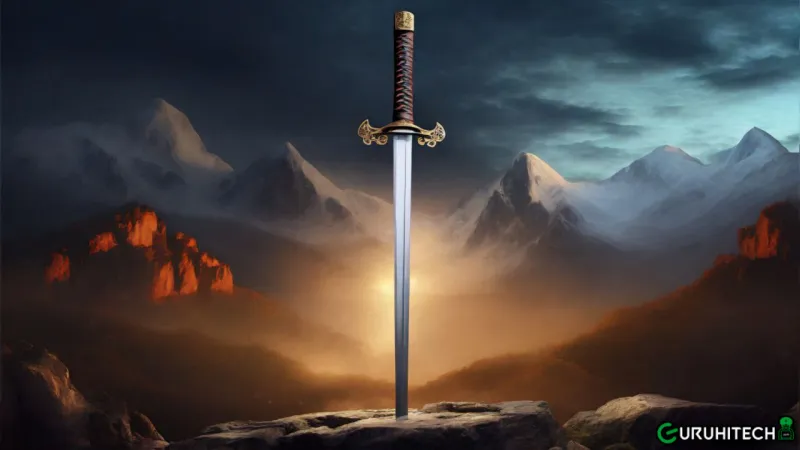Katana Collecting: Tips for Building an Impressive Sword Collection

For enthusiasts and collectors alike, the allure of the katana extends beyond its martial origins; it is a symbol of artistry, history, and cultural significance. Building an impressive katana collection requires more than just acquiring swords—it involves a deep appreciation for craftsmanship, a keen eye for details, and a passion for preserving the legacy of these iconic blades. In this guide, we explore essential tips for katana collecting to help you embark on a journey of building a remarkable sword collection. You can choose various katana from https://www.truekatana.com/catalog/japanese-samurai-swords/katana
1. Educate Yourself on Katana’s History and Styles:
A foundational step in katana collecting is to immerse yourself in these Japanese swords’ rich history and diverse styles. Understand the evolution of the katana from its ancient origins to modern interpretations. Familiarise yourself with different schools of swordsmithing, blade shapes, and distinctive features that characterise specific periods or regions. A well-informed collector can make more intentional and meaningful acquisitions.
2. Set a Clear Collection Theme or Focus:
Define the theme or focus of your katana collection. Are you drawn to historical pieces from a particular era, or do you prefer modern interpretations by contemporary swordsmiths? Some collectors focus on a specific style, such as the traditional samurai katana or more decorative tachi swords. Establishing a clear theme will guide your acquisitions and create cohesion within your collection. You get more info from https://www.truekatana.com
3. Establish a Budget and Research Price Ranges:
Katana collecting can range from affordable options to high-end, rare pieces. Establish a budget that aligns with your financial comfort and the level of investment you’re willing to make. Research the price ranges for different types of katanas to ensure you have realistic expectations. Be prepared to allocate funds for acquiring swords and maintenance, display, and any additional accessories.
4. Authenticity Matters:
Ensure the authenticity of the katanas you consider adding to your collection. Authenticity is about age, craftsmanship, and adherence to traditional techniques. Seek reputable dealers and sellers with a proven track record in dealing with genuine Japanese swords. Look for certification or documentation that verifies the authenticity and origin of the katana.
5. Consider the Condition of the Katana:
The condition of a katana significantly influences its value and desirability. While some collectors appreciate the character of antique swords with visible signs of age, others may prefer well-preserved pieces in excellent condition. Assess the blade, fittings, and scabbard for any signs of damage, corrosion, or alterations. A careful evaluation ensures that each addition to your collection meets your standards.
6. Networking and Building Relationships:
Connect with other katana enthusiasts, collectors, and experts in the field. Attend sword shows, join online forums, and participate in discussions to expand your knowledge and gain insights. Building relationships within the Katana community can provide valuable advice, opportunities to view exceptional pieces, and access to reputable dealers.
7. Storage and Maintenance:
Proper storage and maintenance are crucial for preserving the integrity of your katana collection. Invest in quality sword racks, display cases, or wall mounts to showcase your swords while protecting them from environmental factors. Regularly inspect and clean your katanas to prevent corrosion and maintain their aesthetic appeal. Consider consulting professionals for restoration or maintenance when needed.
8. Diversify Your Collection:
A diverse collection adds depth and interest to your katana display. Explore different styles, periods, and schools of swordsmithing to create a well-rounded group. Diversification enhances the visual appeal of your show and broadens your understanding of the evolution of katana craftsmanship.
9. Document Your Collection:
Keep detailed records of each katana in your collection. Include information such as the swordsmith, age, provenance, and unique features. Documenting your pool serves as a personal reference. It adds value if you decide to sell or pass down your katanas.
10. Legal Considerations:
Understand and comply with your region’s legal regulations regarding katana ownership and acquisition. Some areas may restrict the possession of sharp blades, and there may be specific requirements for antique swords. Stay informed about legal considerations to ensure a seamless and lawful collecting experience.
In conclusion, katana collecting is a rewarding journey that combines historical appreciation, artistic admiration, and cultural connection. By educating yourself, setting clear goals, establishing a budget, prioritising authenticity, networking with fellow collectors, and taking proper care of your collection, you can build an impressive array of katanas that not only showcase the craftsmanship of these iconic swords but also tell a unique story of Japanese history and culture.
Ti potrebbe interessare:
Segui guruhitech su:
- Google News: bit.ly/gurugooglenews
- Telegram: t.me/guruhitech
- Facebook: facebook.com/guruhitechweb
- Twitter: twitter.com/guruhitech1
- Instagram: instagram.com/guru_hi_tech/
- Threads: threads.net/@guru_hi_tech
- GETTR: gettr.com/user/guruhitech
- Rumble: rumble.com/user/guruhitech
- VKontakte: vk.com/guruhitech
- MeWe: mewe.com/i/guruhitech
- Skype: live:.cid.e496a29c3d8dfd2
- WhatsApp: bit.ly/whatsappguruhitech
Esprimi il tuo parere!
Ti è piaciuto questo articolo? Lascia un commento nell’apposita sezione che trovi più in basso e se ti va, iscriviti alla newsletter.
Per qualsiasi domanda, informazione o assistenza nel mondo della tecnologia, puoi inviare una email all’indirizzo guruhitech@yahoo.com.
